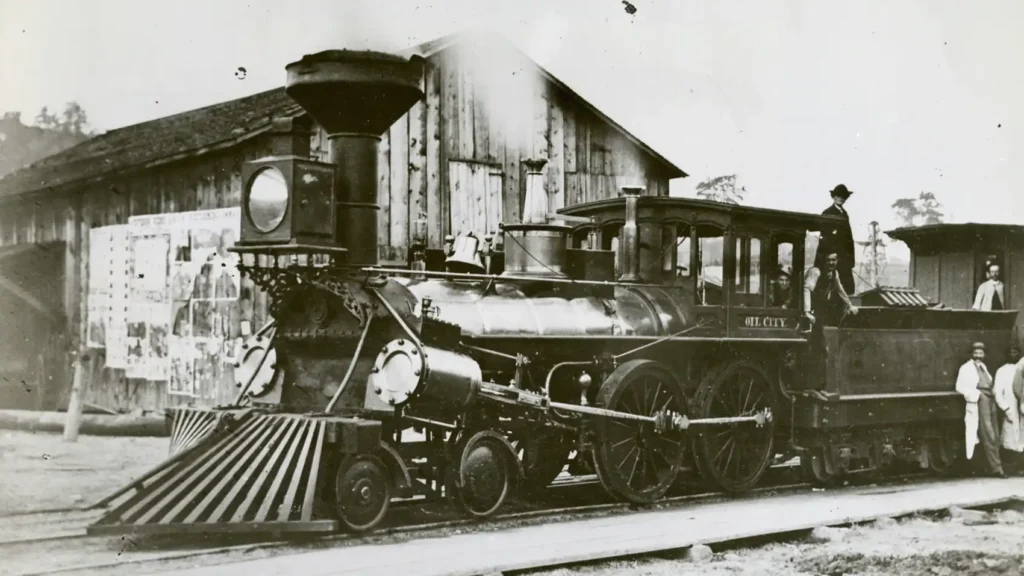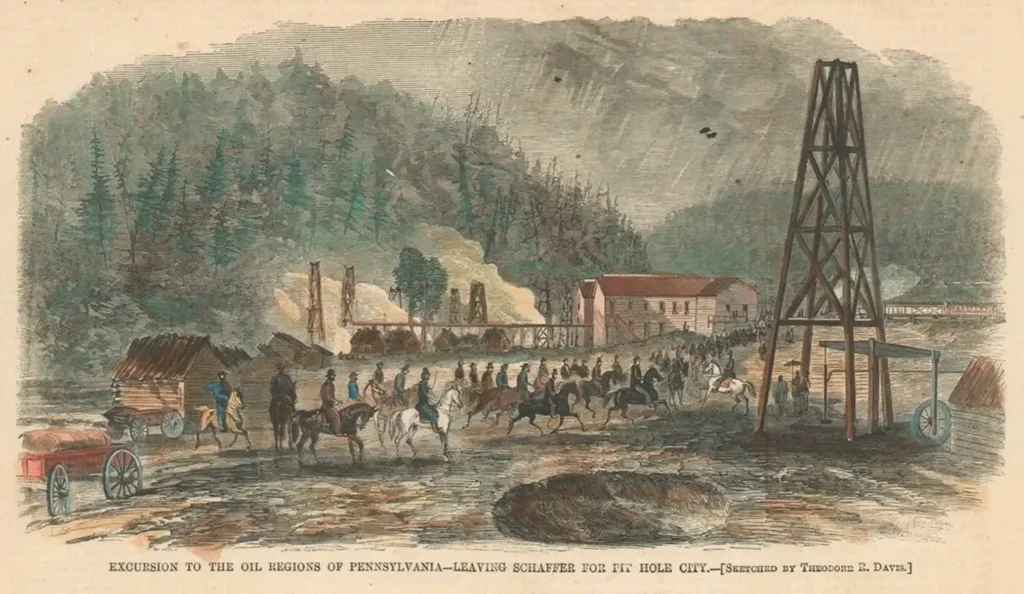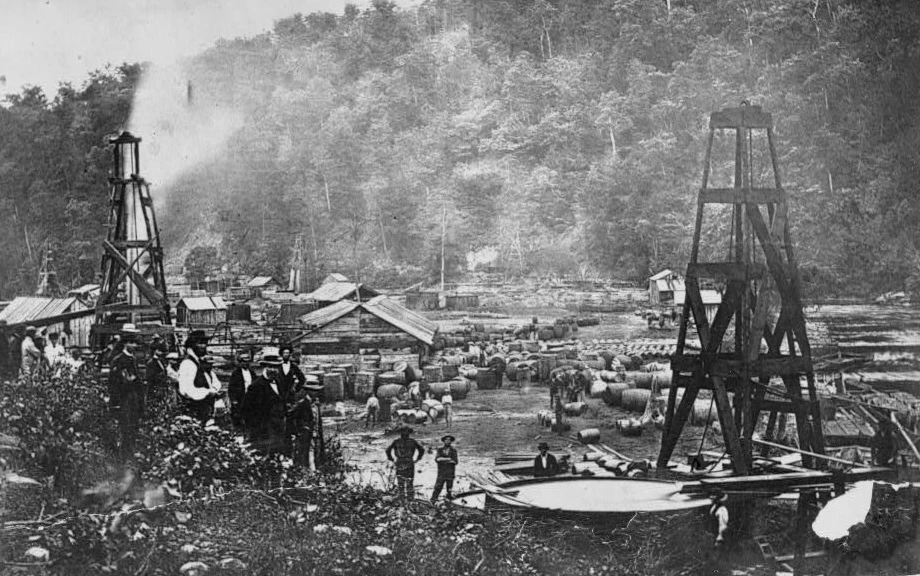Our Reporter Rusticates — Letter from J. P.
Morning Herald (Titusville, Pa.), April 13, 1866

Arrival at the End of the Line
This is the terminus of the proposed Oil Creek Railroad extension. Don’t we wish that this extension were really a fixed fact and accomplished, and that it only became necessary to take the cars at Titusville and find ourselves landed directly in front of the best hotel below Titusville on Oil Creek—to say nothing of the best of landlords. But we want you to understand that we did not come down that way.
A Perilous Ride from Titusville
It is true that we took the cars at Titusville, and in a short time found ourselves at Shaffer, after having viewed with immense perturbation of mind the overhanging cliffs, the tall trees spreading their branches with a gently undulating motion over the cars as we passed under them — making no mention of the venerable pines and hemlocks, which clung with their exposed roots with the tenacity of the fell destroyer to a deceased contraband; and also of huge rocks which required but the slightest touch to precipitate themselves upon us.
And although we mean no disrespect to the Athens of America when we say its streets were laid out by following various cow-paths, yet if that were a fact, Oil Creek, by allowing heavy odds, beats Boston all hollow; for we think a more devious, uncertain, and crooked track was never laid for cars to run upon than that which runs from Titusville to Shaffer.

From Watson Flats to Miller Station
The first object which struck us upon leaving Titusville was the apparent waste of timber as exhibited on Watson Flats. We can only say that if every attempt made there to extract petroleum from Mother Earth had been crowned with success, we should have been favored with more light on the subject.

Hurrying past the Watson, we saw the Kingsland Flats and the famous Drake Well — or as may be more aptly termed, the Pioneer — now only a monument to departed greatness. Now we whirl around the nightcap, and just before reaching it we noticed a number of barrels of oil marked D. B. & S. scattered along the track, occasioned, as we understand, by an accident.
Stopping for a few moments at Miller Station, we noticed the huge tanks connected with the pipe to Pithole. Alas for Pithole! Where are now your five to seven thousand barrels of oil per day? An echo answers, “played out.” We might truly ask, how are you, Miller pipes, Oleopolis pipes, Henry’s Bend pipes, or any other pipes? We only wish there was enough oil to satisfy your utmost cravings.
Shaffer: A Bustling Oil Town
It is but a short distance from Miller’s to Shaffer, and a busy, thriving town is this Shaffer. Judging from a casual glance, one would suppose that oil enough was collected here to light up all creation and bid defiance to Sol himself. Thousands of packages are here collected, to say nothing of the innumerable tanks built on cars, which are coming into extensive use for the transportation of oil — and bid fair to drive the coopers to the very verge of desperation.

Among the most prominent features, however, which we saw, were the large tanks built to receive the oil coming directly through the pipes from Benninghoff Run — to the number of seven, each of 1,200 barrels’ capacity.
Hemlock (Cow Run) and Bull Run
After leaving Shaffer, we “made tracks” on the track to the next stopping place of interest, called Hemlock or Cow Run. Crossing the creek at this point, we ascended the run, and a short distance up we found the first producing wells of any consequence on the creek, belonging to the Rensselaer Oil Company. The products of the two, and only producing wells on this creek, is forty barrels per day. This run, though small and narrow, presents many favorable indications.
Bull Run1, immediately below this, is separated by an intervening range of high hills, over which we wended our way and were much gratified on finding several good producing wells, amounting in the aggregate to four hundred and twenty-five barrels daily — among the most prominent of which was the Boughton Well. The gas from this well is not only sufficient to generate steam for the boiler, but is also used for illuminating the office and private dwellings on the farm, and at the same time is used by other wells and refineries in the immediate neighborhood as fuel.
[To be continued … ]
- Also known as Limestone Run. ↩︎
